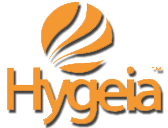
“It’s supposed to hurt.”
It’s one of the biggest breastfeeding myths! That’s not to say nipple pain is not a common hurdle for many new moms, sometimes hindering the establishment of a successful breastfeeding journey. Don’t let discomfort deter you! With proper knowledge and a few helpful strategies, you can manage nipple pain and continue breastfeeding with confidence.
Problems & Solutions: Why Do Nipples Hurt?
Several factors can contribute to nipple pain during breastfeeding:
Problem: Incorrect Latch
An improper latch, where your baby isn’t fully mouth-cupping your breast tissue, can put unnecessary pressure on the nipple and cause pain.
Solution: Perfect Your Latch
Seek guidance from a lactation consultant or healthcare professional to ensure your baby is latching on correctly. A deep latch with a wide mouth opening will help distribute pressure evenly and minimize nipple pain.
Problem: Engorgement
In the first few days after birth, your breasts may become engorged with milk, making it difficult for your baby to latch on properly and leading to nipple soreness.
Solution: Frequent Feedings
Frequent breastfeeding can help prevent engorgement and allow your baby to remove milk effectively. Aim for feeding cues rather than a strict schedule. Pumping and storing excess milk can help reduce engorgement especially during night feeding when baby may go longer stretches without feeding. Check out Hygeia’s hospital-grade breast pump and milk storage containers.
Problem: Tongue Tie
Ankyloglossia, or tongue tie, is a condition where a baby’s tongue is restricted by a short frenulum (the tissue under the tongue). This can make it challenging for them to latch effectively and may contribute to nipple pain.
Solution: Seek a Specialist
While some view correcting tongue-tie as a simple solution for breastfeeding difficulties, there’s ongoing debate about its necessity and potential for over-treatment in some cases. As the parent you have the final say for what is best for your child. You can find a specialist to help guide you to solutions here.
Problem: Friction
Frequent rubbing of the nipples against clothing or improper wiping after feeding can irritate the delicate skin.
Solution: Wear Loose Clothing
Opt for breathable, loose-fitting clothing that won’t rub against your nipples. Also change nursing pads appropriately if they are being used. You can find ideas for comfortable nursing clothes here.
More Solutions for Soothing Soreness
Even if none of the aforementioned problems seem to be the cause of the nipple pain you are experiencing, there are some more steps you can take to find relief:
Warm Compresses: Applying warm compresses to your breasts before feeding can help promote milk flow and ease discomfort.
Cold Relief: After feeding, using chilled breast milk compresses or soothing nipple creams can provide temporary pain relief.
Air Drying: Allow your nipples to air dry completely after feedings to prevent irritation from moisture.
Beyond Relief: Preventing Nipple Pain from the Start
Nipple pain can be avoided in a lot of cases. Here are some proactive tips to prevent the problem before it starts:
Prenatal Education: Learning about proper breastfeeding techniques and latching during pregnancy can help you feel more prepared for the early days of breastfeeding.
Skin-to-Skin Contact: Practice immediate skin-to-skin contact with your baby after birth. This not only fosters bonding, but it also encourages instinctive latching.
Proper Positioning: Experiment with different breastfeeding positions to find one that feels comfortable and allows for a deep latch.
Moisturize (Selectively): While avoiding harsh soaps and lotions on your nipples is crucial, applying a small amount of lanolin cream after feeds can help keep the skin hydrated.
At Hygeia Health, we understand the challenges and rewards of breastfeeding. We’re dedicated to supporting moms on their breastfeeding journeys by providing not only high-quality breast pumps but also access to valuable resources.
If you’re experiencing persistent nipple pain or have any breastfeeding concerns, don’t hesitate to reach out to a lactation consultant or healthcare professional. They can provide personalized guidance and support to help you achieve a successful and comfortable breastfeeding experience.

Newborn cuddles and breastfeeding bliss – that’s the dream, right? The breastfeeding first week sets the stage for your journey, and it can feel overwhelming. But don’t worry, mama, we’ve got your back! This guide will break down each day, offering tips and tricks for those precious early feedings.
Day 1 & 2: Colostrum Power!
Capture the Golden Hour: Your baby is going to be ready to eat upon arrival so take advantage! That first hour outside the womb is the perfect time to let baby’s natural instincts take over and find a perfect latch. Can’t take advantage of the “golden hour”? No worries. Just try to feed your baby as soon as possible.
Focus on Colostrum: In the first few days after birth, your body produces colostrum, a thick, yellowish liquid often called “liquid gold.” It may seem like a small amount, but it’s packed with antibodies to jumpstart your baby’s immune system. This “first milk” is perfectly designed for your newborn’s tiny tummy, promoting healthy gut development and even acting as a natural laxative. Learn more about colostrum in this post.
Frequent Skin-to-Skin Contact: Focus on skin-to-skin contact during these early feedings. This closeness not only helps regulate your baby’s temperature but also strengthens the emotional bond between you and your little one.
Feeding Cues: Your newborn’s feeding cues can be subtle at first, but look for signs like rooting, sucking motions, or fussiness. Aim for frequent, on-demand feedings, allowing your baby to determine how much milk they need. This frequent suckling stimulates your body to produce more milk, a process known as supply and demand.
Day 3 & 4: Latching Like a Pro
Mastering the Latch: Your nurses or the hospital Lactation Consultant may have helped you with latching initially, but you’ll want to focus on properly latching yourself. Your baby’s mouth should be wide open, with their chin and lower lip flanged out. Their tongue should be positioned over a large portion of your nipple and most of the areola.
Transitioning to milk: You will soon notice your milk begin to “come in,” which can feel full or tingly in your breasts. This is a good sign! Your body will produce a lot more milk than it did colostrum, so don’t be surprised. If you experience any pain or discomfort during feeding, don’t hesitate to seek help from a lactation consultant (IBCLC).
First outpatient appointment: You will likely have your first outpatient appointment scheduled before you even leave the hospital. Your doctor will check in on things like feedings and diaper changes, as well as baby’s measurements. This is the perfect time to address your questions and concerns.
Day 5 & 6: Finding Your Rhythm:
Feeding Routine: You’ve likely developed some type of feeding routine, but keep in mind that newborns still have small stomachs and need to eat frequently. Be prepared for 8-12 feedings or more in a 24-hour period.
Finding a Rhythm: Your feeding routine may be demanding but your body will be adjusting to its feeding duties. Your nipples should feel some relief from any initial tenderness and you should also be gaining confidence in latching. This should give you the opportunity to experiment with new feeding positions.
Hello Hormones: It’s quite possible that you’ll feel everything from sadness and overwhelm to joy in a matter of moments. It’s normal, thanks to hormones; however, postpartum depression and postpartum anxiety are also a common concern. Familiarize yourself with the signs of both and don’t be scared or ashamed to take it to your OB, MD or Lactation Consultant for the support you need.
Day 7: 1 Week!
Celebrate Your Success: You’ve conquered the first week of breastfeeding! Hopefully you’ve learned your baby’s feeding cues, mastered the latch, and established a breastfeeding routine, but if not don’t be discouraged. It’ll come soon.
Supportive Network: Having a strong support system can make all the difference. Consider connecting with a lactation consultant (IBCLC) or joining a breastfeeding support group. These professionals can offer valuable guidance on troubleshooting any challenges you may face.
Additional Support: Hygeia is also here for you! We offer a hospital-grade strength breast pump designed to mimic a baby’s natural suckling pattern for efficient milk expression.
Remember, mama, you are doing an amazing job! Breastfeeding is a beautiful and rewarding experience. By following these tips, seeking support when needed, and utilizing the right tools, you’ll be well on your way to a successful breastfeeding journey.

Breastfeeding latch may be natural, but that doesn’t guarantee the initial latching process will come naturally–for you or baby. Achieving that successful latch can sometimes feel like a complex enigma, especially for new moms. However, it’s an essential step in achieving fruitful breastfeeding goals. A strong latch will guarantee your comfort as well as your baby’s ability to fill up on milk effectively.
This quick guide will equip you with the knowledge and strategies to master the art of the breastfeeding latch, setting you and your baby on the path to a smooth and joyful breastfeeding journey.
Why is a Good Latch Important?
A proper latch ensures your baby receives the nutritious hindmilk, the fattier milk that comes after the initial foremilk. That’s not to mention that a good latch helps prevent nipple pain, promotes milk production, and reduces the risk of blocked ducts and mastitis.
Signs of a Good Latch:
Wide Mouth Opening: Your baby’s mouth should be wide open, with a good portion of your areola (the darker area around the nipple) visible above their upper lip.
Deep Latch: Your baby’s chin should be resting on your breast, and their lips flanged outward, forming a seal around your areola.
Comfortable Feeding: You shouldn’t experience any nipple pain during feeding. You may feel a tugging sensation, but it shouldn’t be sharp or uncomfortable.
Effective Swallowing: Observe your baby swallowing regularly during feeding, with pauses in between sucks.
Strategies for Achieving a Good Latch:
Skin-to-Skin Contact: Initiate feeding with skin-to-skin contact. This not only promotes bonding but also encourages your baby to root and latch on instinctively.
Support Your Breast: Use a C-hold (thumb on top and fingers cupping underneath) to support your breast without blocking your baby’s nose.
Tickle and Trigger: Gently tickle your baby’s lips with your nipple to stimulate their rooting reflex. Wait for them to open their mouth wide before offering your breast.
Aim High: Aim your nipple towards the roof of your baby’s mouth, not just the tip.
Observe and Adjust: Pay close attention to your baby’s cues and adjust your positioning or latch if needed. Don’t be afraid to seek help from a lactation consultant if you’re struggling.
Common Latch Challenges and Solutions:
Shallow Latch: If your baby isn’t latching deeply enough, try unlatching them and repeating the steps above, ensuring they take a bigger mouthful of breast tissue.
Tongue Tie: Ankyloglossia, or tongue tie, can restrict your baby’s tongue movement and make latching difficult. Consult your doctor or a lactation consultant to discuss if a frenotomy (tongue-tie release) is the right solution.
Flat or Inverted Nipples: While flat or inverted nipples can pose a challenge initially, they don’t necessarily prevent successful breastfeeding. There are techniques and tools like nipple shields that can help your baby latch.
Supporting Your Breastfeeding Journey Every Step of the Way
At Hygeia Health, empowering mothers on their breastfeeding journeys is our priority. While breast pumps may be our specialty, we understand the importance of a good latch and offer a variety of resources to support you, including:
Informative blog posts: Our blog is packed with valuable information on various breastfeeding topics, including latching techniques.
Insurance-covered lactation consultations: We can connect you with a lactation consultant who can provide personalized guidance and support. Click here to learn more about Hygeia Health’s breastfeeding resources and insurance-covered lactation consultations!
Embrace the joy of breastfeeding with a confident latch and the support you deserve!

Breastfeeding is a beautiful journey, but it can also come with challenges, especially in those early days. Finding a comfortable and successful latch is key for both you and your baby. The good news is, there’s no single “right” position – every mom-baby pair finds what works best breastfeeding position.
Popular breastfeeding positions to get you started:
- The Cradle Hold: This classic position is a great go-to for many moms, particularly newborns. You cradle your baby close, arm supporting their head and neck, with their body facing yours. Their tummy should be against yours, promoting skin-to-skin contact. This position allows for easy control and good visibility to ensure a proper latch.
- The Cross-Cradle Hold: Similar to the cradle hold, but with your baby nestled across your body, supported by the opposite arm. This can be helpful for babies with torticollis (a stiff neck) or those who have trouble turning their heads towards one breast.
- The Football Hold: This hold is like a quarterback cradling a football under their arm. Perfect for newborns with latching difficulties or moms with larger breasts. With your baby tucked under your arm, their head resting near your breast, it allows for better control and deeper latching.
- The Side-Lying Position: This cozy position is ideal for nighttime feedings or relaxed lounging. Lie on your side facing your baby, with pillows for support. Your baby can then nuzzle in close, latching comfortably.
- The Laid-Back Position: This relaxed approach allows gravity to assist your baby in latching. Recline comfortably, with your baby lying on your tummy. Let your baby lead the way, rooting around and latching on naturally.
Tips for Success:
Comfort is Key: Experiment with different positions until you find one that feels natural and supportive for both you and your baby.
Proper Latch: Ensure your baby’s mouth is wide open and they have a deep latch on both the nipple and surrounding areola.
Support: Pillows can be your best friend for positioning and comfort. Use them to prop up your arms, support your back, or elevate your baby.
Skin-to-Skin Contact: This is essential for promoting bonding, regulating baby’s temperature, and improving milk production.
Finding the Perfect Fit:
While breastfeeding positions are crucial, having the right breast pump can also play a significant role in your breastfeeding journey. Hygeia Health offers a range of high-quality breast pumps designed for comfort, efficiency, and discreet pumping.
Ready to Apply for a Free Breast Pump?
Many insurance companies are required to cover the cost of a breast pump under the Affordable Care Act. Hygeia Health can help you navigate the insurance process and determine if you qualify for a free breast pump through our simple online application. Visit our website at Hygeia Health website to get started today!
By finding a comfortable breastfeeding position and having the right support system in place, you can embark on a successful and rewarding breastfeeding journey.

Breastfeeding: it’s the way anyone can level up to supermom status, right?
While it is an amazing journey, it is completely normal to hit a few bumps in the road. The good news is no mom needs to be alone in their journey! There is a ton of support available to help moms navigate this new chapter of motherhood and empower them to thrive with breastfeeding.
In this blog post, in the spirit of World Breastfeeding Week, we will discuss the best people and places to find breastfeeding support.
Healthcare Providers
Your doctor or midwife is a great place to start for support. They may not be the experts themselves, but they can likely provide you with initial information, point you in a good direction for resources, and even refer you to lactation consultants. Remember, they deal with moms who are new to breastfeeding on a regular basis.
Lactation Consultants
Lactation consultants are specially trained professionals who can help with breastfeeding questions, problems, and general support. They are wonderful assets for assisting with latching, milk supply, and other common issues. Today, most hospitals have a lactation consultant on staff. If one does not visit you upon delivery, don’t miss out. Request that the on-staff lactation consultant visit before your stay is over.
Support Groups
A mom tends to feel less alone about her struggles when she’s able to share her experiences with others who are going through or have been through similar challenges..Support groups can be a great way to connect with other breastfeeding moms and get the encouragement needed. This can also be a great way to receive tips from moms who’ve had to tackle the same issues. La Leche League offers support groups across the country or check with your hospital, as many offer support groups. If yours does not, the lactation consultant may be aware of a local group.
Partners and Family
Your partner and family can, and hopefully will, play an important role in your breastfeeding journey. They can provide emotional support, help with household chores, and take care of older children if needed. Of course, not every mom has this kind of support at home. In this case, sometimes friend circles can become like family and set up meal trains and regular check-ins to be sure a mom has the support she needs.
Online Resources & Hygeia Health
The beauty of today’s world is that not everything has to be within driving distance to be accessible. There are many online resources available, including websites, blogs, forums, and even support groups. However, the plethora of options available can be both a blessing and a curse. An already overwhelmed mom struggling in her breastfeeding journey likely doesn’t have the fortitude to sift through endless search results. Fortunately, there are trustworthy sources for information, support, and community, such as La Leche League, Academy of Breastfeeding Medicine (ABM), Healthline and The World Health Organization (WHO).
Hygeia Health
We at Hygeia Health are on the top of the list as well! We’re here to support you in all ways. Our website offers information and resources on breastfeeding and our customer service team is available to answer your questions. We also partner with Nest Collaborative to provide virtual breastfeeding consults accessible anytime, anywhere, covered by most insurance plans at no cost to you.
Remember, you’re not alone. There are many people and resources available to help you on your breastfeeding journey. Don’t be afraid to ask for help.





